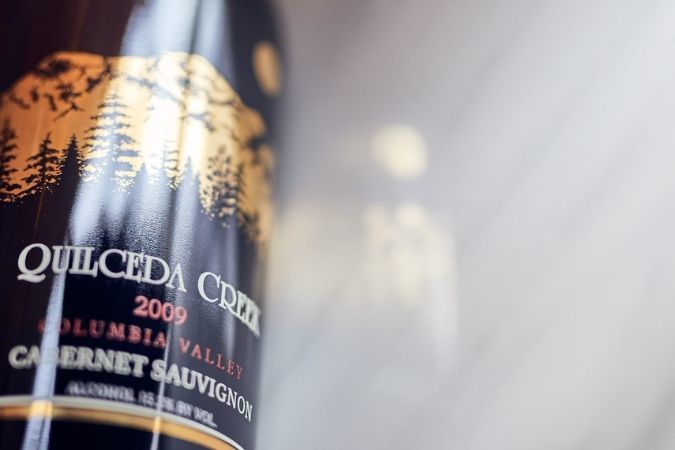‘A monumental wine in the making,’ Robert Parker wrote about the 2007 Quilceda Creek Cabernet Sauvignon. He awarded it a perfect 100 points. Stephen Tanzer, whose tastes didn’t often align with Parker’s, echoed his enthusiasm. ‘Like liquid silk on the palate,’ he gushed. ‘Yet powerful at the same time.’ Notoriously stingy with his assessments, Tanzer gave the Quilceda Creek a 95. Not many American wines that year would have scored higher.
This July, for my mother-in-law’s 80th birthday, I served a bottle of that 2007 alongside a boneless leg of lamb that I’d roasted with mint and rosemary from our garden. It was a special night, and the Quilceda Creek indeed proved to be a special wine. Still muscular after 14 years, it was perfectly proportioned and delightfully aromatic.
I was pleased not just because the wine made the meal – but because I own seven more bottles of it. I also happen to have another two-and-a-half cases of Quilceda Creek, spread across every vintage from 2002 to 2010. The wines are a little bigger than I prefer for Cabernet these days – 15% alcohol or higher – but I plan on drinking every bottle. Not least because, as it turns out, I can’t sell them.

I first came across Quilceda Creek in the late 1990s. The wines were made north of Seattle by Alex Golitzin, a nephew of American oenological pioneer André Tchelistcheff, from fruit grown in central and eastern Washington. At the time, they struck me as some of the best American Cabernets I’d tasted – and indisputably the most ambitious American wines made outside Napa Valley. It was a great story, and I wrote it for various publications.
I also started buying a case of Quilceda’s Cabernet off the mailing list every year. At about $100 (£75) a bottle, the wines seemed cheap compared with the Colgins and Harlans that were going for three times that much. And in blind tastings, as Golitzin delighted in demonstrating, they showed just as well.
My stash of Quilceda Creek appreciated in quality, but my investment? Not so much
I justified the expense to my wife by explaining that it was actually an investment in our future: Quilceda Creek was a blue-chip stock, or that vacant lot next door that we’d been talking about buying. We were starting a family at the time, and it seemed unlikely that a journalist’s income would be sufficient to support my habit of buying rarefied wines for much longer. I figured I could sell half of my stash of Quilcedas in the years to come and use the return to finance future purchases.
As it turned out, the wines appreciated in quality, just like Parker and Tanzer expected they would. But my investment? Not so much. When I checked recently online, I found a bottle of that 2007 available at K&L Wine Merchants outside San Francisco for $229 (£170). Wine-searcher.com showed three other stores selling it for less– and a magnum for $305 (£230). That means it’s barely any more expensive than the 2018 Quilceda, which is going for $168 (£125). By comparison, the average price of 2007 Harlan Estate, according to the same site, is $1,619 (£1,210). The Screaming Eagle of the same vintage? $4,427 (£3,305).


It isn’t often that you find such a disconnect between the major critics and the marketplace. I suspect it’s a built-in bias, held by America’s ‘look at me’ drinkers, for Napa Valley– and against everywhere else in the country. Never mind that Napa is becoming increasingly untenable for growing the Cabernet Sauvignon and Chardonnay that made its name, or that the eastern half of Washington State has evolved into one of the most compelling viticultural regions of the new world.
Like Rolls-Royce or Bentley, to someone who wants only the best of everything, Napa signifies the luxury lifestyle. It’s a sure bet that any top-end wine from there will be overvalued– which makes nearly everything else at that level a comparative bargain.
That’s for today’s wine buyer. For someone who has been carefully cellaring some of these wines for two decades, the (ahem) arbitrage opportunity is more in the realm of experience than financial gain. I know the provenance of the Quilcedas in my cellar is perfect, which is worth something in terms of peace of mind. And every few months, when friends come through town or we’re celebrating a special event, I pull a cork.









